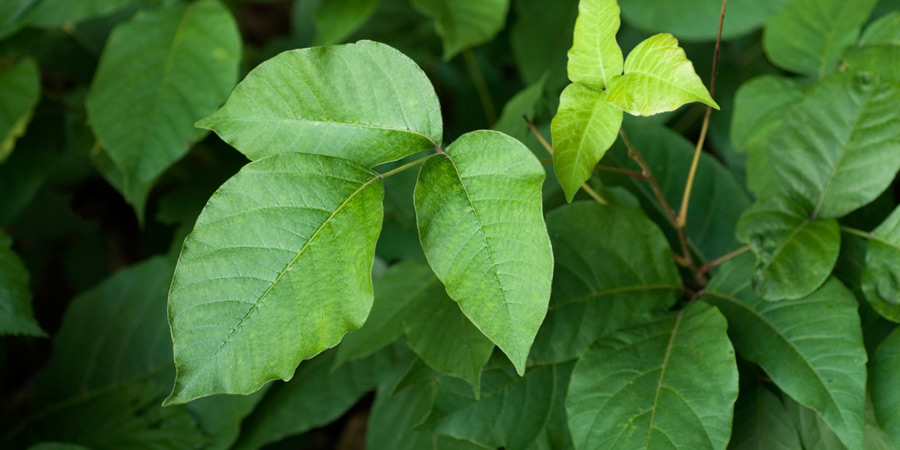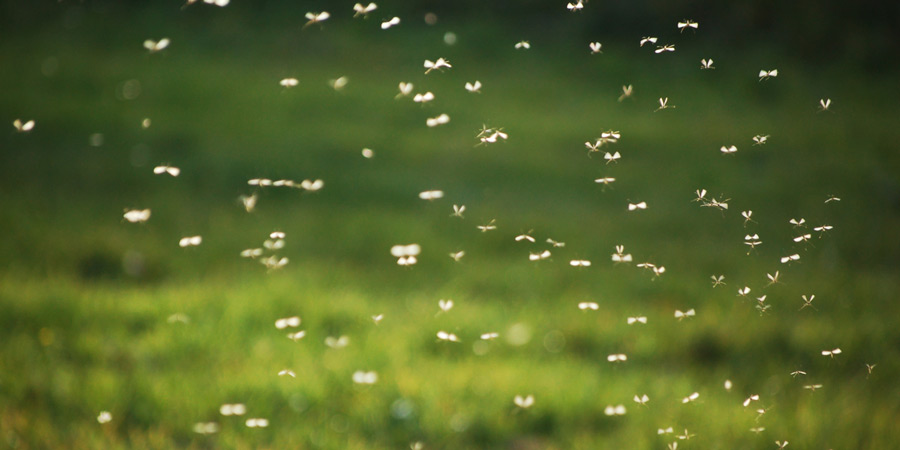- Vegetation Management Services
- Industries
- In Your Neighborhood
- About
- Careers
- Webinars
- Articles
Poisonous Plants in Winter

Protecting against poison oak and ivy exposure
Identification and Differentiation
During winter, recognizing these poisonous plants without their leaves can help keep outdoor workers of all types from contracting a nasty rash. Since urushiol, the chemical present in the sap of these plants that causes irritation, is found in the leaves, stems and roots of poison ivy, oak and sumac, dormant and even plants that have been dead for several years can still contain urushiol.
Forests, streams, wetlands and parks are common areas of encounter. However, backyards, construction sites and urban areas are home to these plants too. Here are a few identifiers to watch for in winter:
- Poison oak can look like a pile of dead branches with a distinctive branching pattern. Branches may have an orange or reddish tinge and often appear to have a smooth “rubbery” looking texture.
- Poison ivy can be identified by the reddish “hairy” vines found on rocks or trees and sometimes by the small, dull, silvery berries that are visible when the leaves have fallen.
In California, the number of working hours lost as a result of dermatitis from poison oak makes it the most hazardous plant in the state. Education and preparation of a workforce will give them tools to recognize and avoid these irritating plants.
Preparation and Prevention
- Dress appropriately. Wear gloves, a cap, a long- sleeve shirt and long pants. Cover as much skin as possible.
- Try barrier creams. These products form a barrier preventing urushiol from penetrating the skin.
- Urushiol can remain on objects it comes in contact with for up to 5 years. Thoroughly wash all tools that may have been used with plenty of water and rubbing alcohol (isopropanol or isopropyl alcohol) or soap.
Symptoms and Treatment
- A red rash appears along with possible bumps, patches or blisters within a few days of contact.
- Swelling and itching are common effects. Consult a physician if a severe reaction occurs, symptoms lasting over 3 weeks.
- Clean exposed areas with rubbing alcohol or products like Technu Extreme® or other urushiol dissolving products.
- Wash the exposed areas with water only (soap can move the urushiol around the body and make the reaction worse).
- Using gloves, wipe everything you had on, including shoes, tools and clothes using alcohol and water. Wash your clothes separately with detergent and hot water.
Avoiding Slips, Trips and Falls Outdoors [Infographic]
Slips, trips and falls together represent one of the most frequent causes of injury at work and at home. Falls alone comprise a large percentage of work-related injuries and an increasing proportion of accidental deaths in later life.
Encouraging A Healthy Workforce
Understanding BMI and obesity
A common way of working toward a healthier lifestyle starts with assessing your Body Mass Index or BMI. BMI is a screening tool used to identify possible weight problems in adults by using height and weight correlation. Companies can take an active role by offering screenings and encouraging education about healthy lifestyles, without pressuring employees.
Individuals considered overweight or obese are at risk for health conditions and diseases like hypertension, type 2 diabetes, heart disease, gallbladder disease, osteoarthritis, sleep apnea, respiratory problems and some cancers.
Pros of BMI
- Helps categorize weight categories associated with potential health issues.
- Inexpensive and easy for general public use. Only requires height and weight.
- Allows for comparison of weight against general population.
- Provides a fairly strong correlation between BMI and body fat.
Cons of BMI
- Not a direct measure of body fat, nor is it a diagnostic tool.
- Correlation can vary by sex, race and age.
- Does not differentiate muscle and fat ratio. Athletes with low body fat can still have a high BMI.
Improving employee health and safety isn’t just about reducing costs. Companies that approach safe operations and employee health as a key component of their core business enhance their brand and promote job satisfaction, which motivates workers to be more efficient and thus more productive.
What To Know About Flu Vaccines
Prevention options for the height of flu season
The severity and length of each flu season is unpredictable. Generally, flu activity peaks in the United States around January or February. Flu activity can start as early as October and as late as May. Flu vaccines are the best way to reduce the chances of getting the flu and spreading it to others.
Educating employees on why it’s important to receive vaccinations and where they can do so, is a vital step in planning against the unpredictability of flu season.
Key facts about the seasonal flu vaccine can be found at the Center For Disease Control’s website.
Partnership For Safety
OSHA renews strategic partnership with electrical transmission and distribution contractors
On December 19, 2013, The Occupational Safety and Health Administration (OSHA) took a step to continue improving industry safety — renewing a strategic partnership representing nearly 80% of the industry, including ten of the nation’s largest electrical transmission and distribution contractors.
The partnership was developed to implement best practices (fall protection, specific insulating protective equipment and safety checks) that correspond to key hazards and operations associated with industry-wide injuries, illnesses and fatalities. More than 33,000 workers and supervisors received training from the partnership with courses specifically developed by the partners.
OSHA’s Strategic Partnership Program helps encourage, assist and recognize the efforts of partners to eliminate serious workplace hazards and achieve a high level of worker safety and health. Read the full OSHA release here.
ABOUT ACRT SAFE
Featured Webinar
Safety Protocols in Confined Spaces for Metering Professionals
In this webinar, Alan Ely explores critical safety measures, protocols, and best practices tailored for metering industry professionals operating in confined spaces.
Recent Posts
- Alex Fields Awarded ACRT Safety Challenge Coin 20th Nov 2025
- Servant Leadership in Utility Vegetation Management 12th Nov 2025
- ACRT Honors Our Veterans 10th Nov 2025
- Anna Davis Awarded Safety Challenge Coin 04th Nov 2025
- ACRT Senior Consulting Utility Forester Recognized as Safety Superstar 15th Oct 2025
Categories
The Leader In Vegetation Management
We are all about people, and we put safety first. Ready to work with our well-trained team?



